Kairaga.com – Do you know? that besides ancient manuscripts written on the palm leave material called lontar (ron tal), there are also ancient manuscripts written on gebang leaves. These gebang (Borassus flabellifer) leaf manuscripts were formerly considered as nipah (nipa fruticans). This information update was revealed by Aditia Gunawan in the article “Nipah or Gebang: A Philological and Codicological Study Based on Sources from West Java” published in Bijdragen tot de Taal-, Land-en Volkenkunde 171 (2015) 249–280.
The gebang script is written using traditional ink with buda / gunung characters with thin patterns. Some of the texts use Old Javanese, some also use Old Sundanese. The locations of the discoveries include Kabuyutan Jasinga (Bogor), kabuyutan Ciburuy (Garut), and from the site of the slopes of Merapi-Merbabu. The script used in the gebang script is even though it is called the Buda script, but it has a distinctive style when compared to the Buda script which is applied to the palm leaf media. What are the scripts that use this gebang media? let’s see some examples!
Sanghyang Kiksa Kandang Karesian
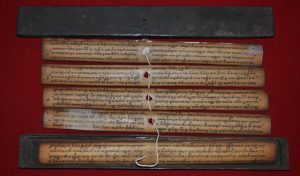
No. inv. L 630 (Indonesian National Library)
Script: Buda / Gunung; language: Old Sundanese; Location of origin; Galunggung; Year of writing: 1440 Saka (1518 AD); Storage institution: RI National Library. Text and translation editions were carried out by Saleh Danasasmita et al (1981, 1987).
Arjunawiwaha
16 L 641 Arjunawiwaha (doc. Lontar Digital Library)
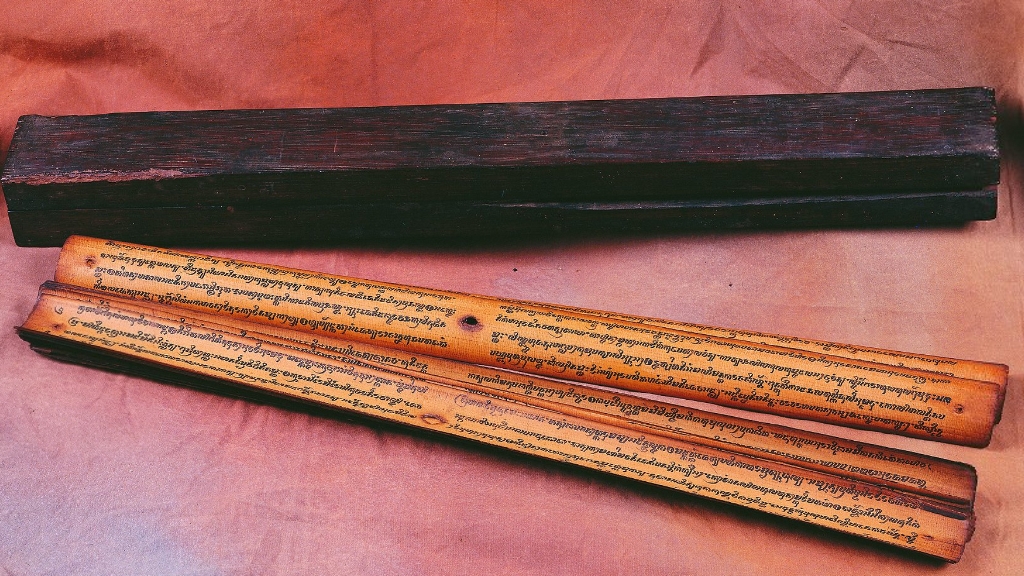
16 L 641 Arjunawiwaha (Lontar Digital Library)
Script: Buda / Gunung; language: old Javanese; Location of origin: Bandung; Year of writing: 1344 AD; Storage institution: RI National Library. Research: R. Ng. Poerbatjaraka, 1926 “Arjuna-Wiwāha. Text en vertaling.” Bijdragen Intermediate Communication 82: 181-305.
Kunjarakarna

Kunjarakarna (LOr 2266 Kunjarakarna (doc. Wikimedia Commons)
Script: Buda / Gunung; language: old Javanese; Location of origin: Merapi-Merbabu; Depository: Leiden University, Netherlands
Sanghyang Hayu
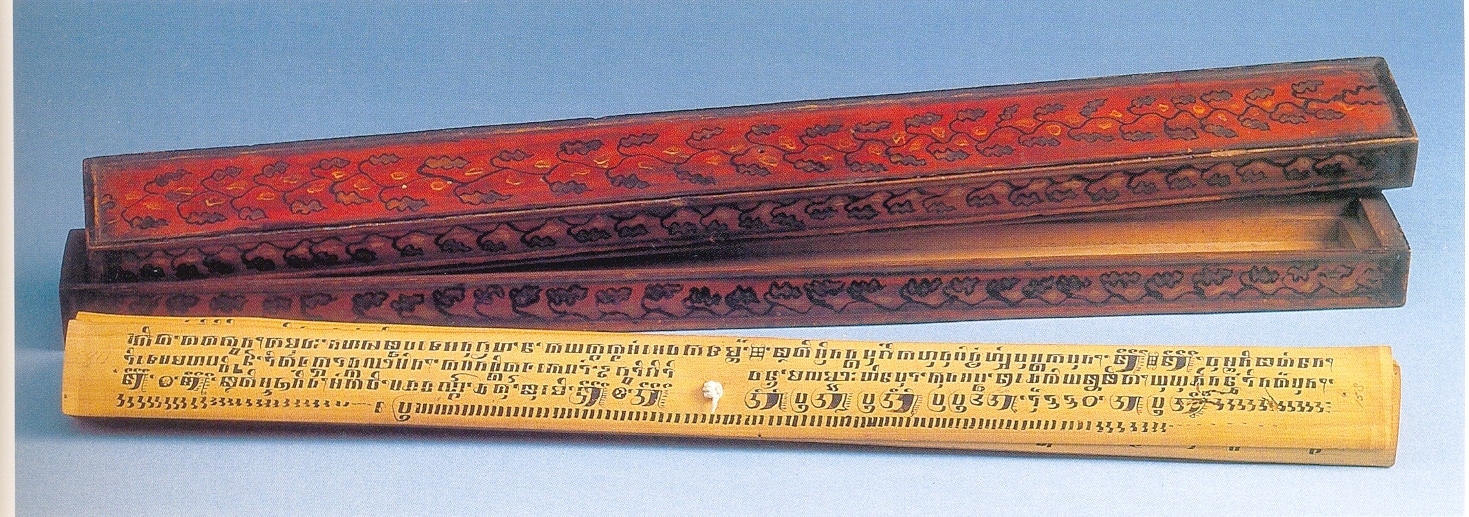
Br. 344 Earthly Sanghyang / Chess Fiber (Doc. Aditia Gunawan)
Script: Buda / Gunung; language: old Javanese; Location of origin: Garut; Storage institution: Indonesian National Library, Kabuyutan Ciburuy. In the National Library there are four copies stored with the code Br.634 (Earth Chess Fiber) (written in 1445 Saka / 1523 AD), Br.636 (Buwana Pitu Fiber), Br.637 (Sewaka Darma Fiber), and Br.638 (Dewa Fiber). Buda). Another copy is in the Kabuyutan Ciburuy collection, Kab. Garut. Research: Law A. Darsa, Unpad Postgraduate Thesis, 1998.
Dharma Patanjala
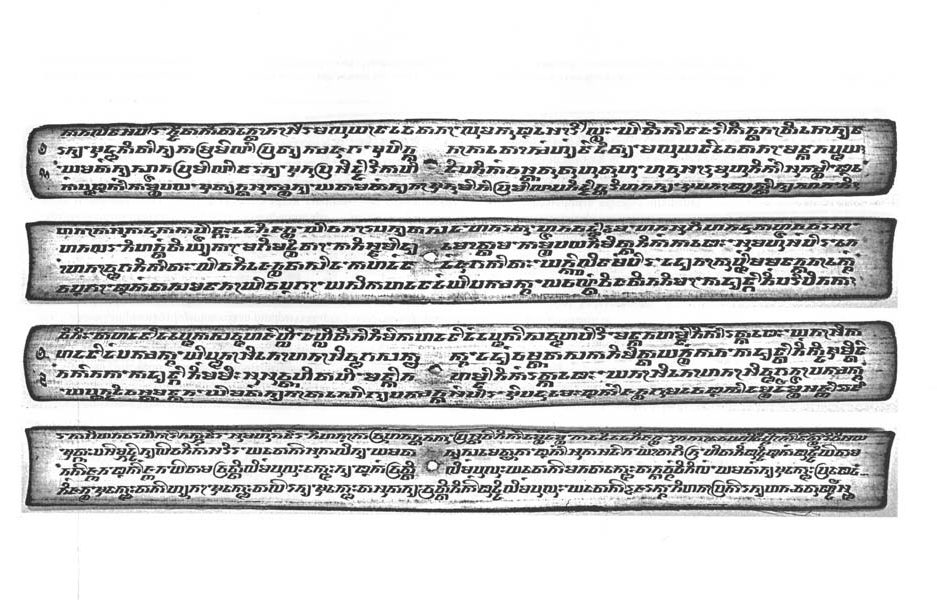
Dharma Patanjala (doc. Andrea Acri)
Script: Buda / Gunung; language: old Javanese; Location of origin: West Java; Depository: Berlin Staatsbibliothek, Germany; Research: Andrea Acri (2011), Leiden University Dissertation, Netherlands.
Bhima Swarga

Bhima Swarga (doc. Aditia Gunawan)
Script: Buda / Gunung; language: old Javanese; Location of origin: -; Storage institution: National Library of Indonesia, Kabuyutan Ciburuy. Researcher: Aditia Gunawan (2016) Thesis on the l’Institut national des langues et civilization orientales en vue de l’entention (INALCO) du M2, France.
Sanghyang Tatwa Ajnyana
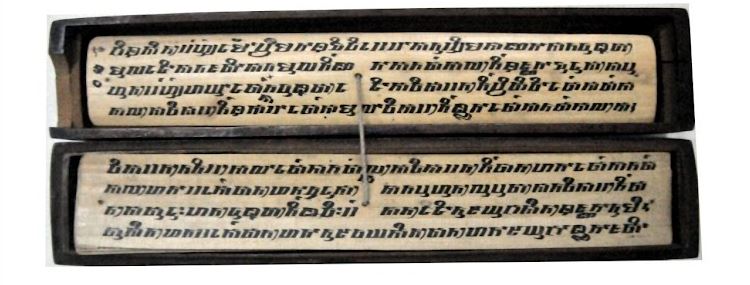
Sanghyang Tatwa Ajnyana (doc. Tien Wartini et al.)
Script: Buda / Gunung; language: Old Sundanese; Location of origin: kabuyutan Citanggong, Jasinga; Storage institution: RI National Library. Research: Tien Wartini, Mamat Ruhimat, Ruhaliah, Aditia Gunawan (2011)
Sanghyang Raga Dewata
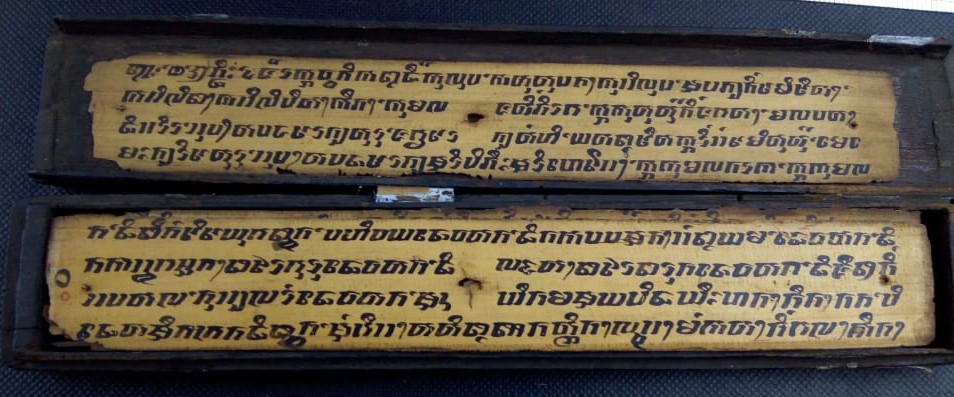
Sanghyang Raga Dewata (doc. Ilham Nurwansah)
Script: Buda / Gunung; language: Old Sundanese; Location of origin: -; Depository: Sribaduga State Museum, West Java. Ekadjati, Edi S. & Undang A.Darsa, 2004. “Sang Hyang Raga Dewata”, in Sundalana 2: Fatimah in West Java, Moral Admonitions to Sundanese Gentlewomen and Other Studies on Sundanese Culture. Bandung: Center for Sundanese Studies. Pages 133–179.